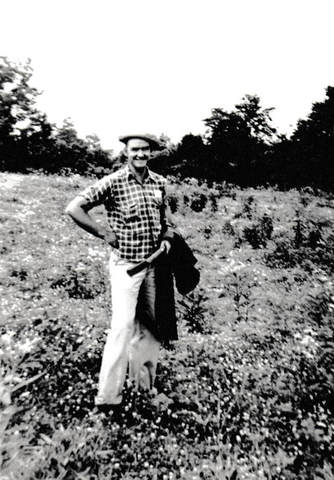 Bobby Cole on his family's farm. Bobby Cole on his family's farm. The Last Resort—the camp along Salt River and, ultimately, the book by the same name—came to pass because of the bond that formed between two classmates. Pud Goodlett and Bobby Cole shared a love of the outdoors and relished the time they spent together fishing and hunting. At some point in their teen years they hatched the plan to build the cabin on the bluff above the river on the Cole family farm. Thus began the idyllic days described in Pud’s journal. The relationship between the two boys appears deep and sometimes complicated. Pud is occasionally annoyed by Bobby’s radio, his fastidiousness, or his desire to head home for a shower and a shave after a few days at camp. But Pud is also proud of Bobby’s marksmanship and his ability to identify the trees along the river. It is clear that he is devoted to his friend, and his sadness when Bobby is called up for service is profound. On November 1, 1942, Pud writes, “Went to camp early this morning for the first time since Bobby left. All the bottom seems to have fallen out of the joy of that wonderful, free life on the river. Bobby’s worrying about the dirty floor, the big leak, the state of his radio, the fact that our floor has spread and the countless other dear old-maidish things he did are gone, seemingly forever. I don’t believe I’ll ever be able to spend a weekend here until he can again spend it with me.” Of course, Pud did return to the camp, but he had to enlist a whole group of young boys from his Scout troop to try to fill the hole created by Bobby’s absence. That never proved completely satisfactory, but it did allow Pud to extend his time at the camp until he, too, was called to fight a war. From the limited evidence we have, the boys seemed tighter than mere friends. They seemed more like brothers. In fact, we now know that they were cousins. Bobby had a keen sense of his family’s history and its roots in the area, and I imagine he was aware that the nearly 400 acres his father and older brothers tilled had been in the family for generations. John W. Cole had pieced the property together in the 1880s from extensive lands owned by his Bond, Kavanaugh, and Penney (yes, of J.C. Penney lineage) ancestors. Some had settled the area in the late 1700s. The main Kavanaugh home had been built in 1840. The stone for the chimney Bobby and Pud constructed, which still stands today, was confiscated from the crumbling foundation of a former slave cabin. 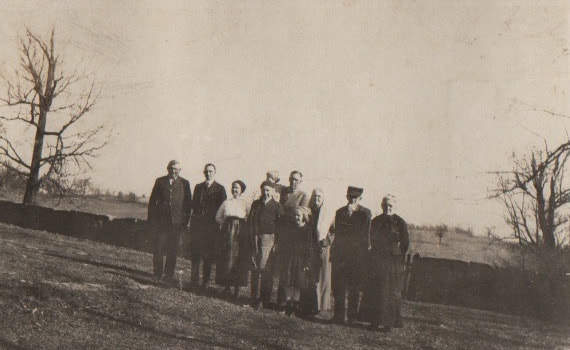 On the farm, circa 1918. Left to right: James L. Bond (1855-1934), William B. Cole (1881-1983), Lula Roach Cole (1880-1964), J. W. Cole (1905-2001), Allen Carroll Cole (child, 1916-1987), John William Cole (1860-1924), Mary Louise Cole Ransdell (girl standing, 1911-1988), Annie Bond Cole (1862-1948), John W. Bond (1846-1929), Phoebe Utterback Bond (1851-1940). Photo provided by Bob Cole. Bobby knew all this. But I doubt that Pud was aware of his own familial ties to the land. Thanks to the curiosity of Bobby’s daughter, Julie, and to the detective abilities of her son, Nicholas, we now know that Pud and Bobby share a common ancestor. William F. Bond was born in Virginia in 1740. After his first wife died sometime around 1786, he accepted a land grant awarded for his Revolutionary War service and moved his four children west with the Penney and Burrus families to what is now central Kentucky. In 1790, he married Sarah Cranson, who hailed from what was then Woodford County, Virginia. William and Sarah had five more children. Bobby was a descendent of their oldest son, John. Pud was a descendent of their second oldest daughter, Ailse. In fact, the boys can also trace their families back to a common Utterback ancestor. And Pud’s mother had connections to the Bond family through her maternal grandmother, Mary Ann Routt. Of course, we’re talking about a small rural community. It’s no surprise that two families with longtime roots in the same geographic area have common ancestors. But it somehow feels special to know that Pud and Bobby were connected by more than the teeming water of Salt River. They were connected by blood. Transcription of marriage contract (with gratitude to Nick Wilson, Bobby Cole's grandson, for offering his legal and historical expertise):
Know all men by these presents that William Bond and Sherwood Knight are held and firmly bound unto his Excellency the Governor of this Commonwealth in the first and full sum of fifty pounds current money to which payment will and truly to be made we and every of us bind ourselves and every one of our heirs Executors and administrators jointly and severally firmly by these presents sealed and dated this 29th day of November 1790. The condition of this obligation is that whereas a marriage is shortly intended to be solemnized between the above bound William Bond and Sally Cranson of the County of Woodford. Now if it shall hereafter always appear that there is no just cause to obstruct this said marriage then this obligation shall be void or else to remain in full force. Test: Thomas Arnold William Bond Sherwood Knight
1 Comment
Rogers Barde
12/10/2018 08:28:17 am
Genealogy is fun and endlessly surprising. It is history on a very personal level.
Reply
Your comment will be posted after it is approved.
Leave a Reply. |
Details
Archives
June 2023
Categories
All
|

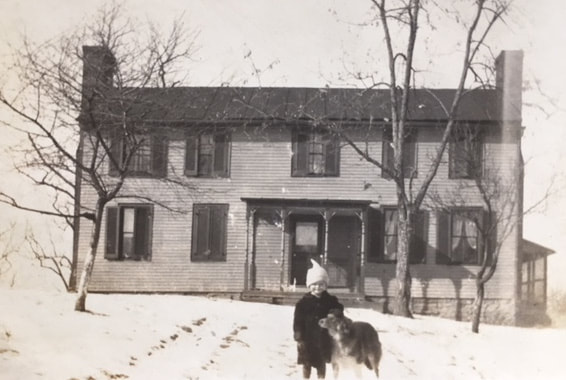
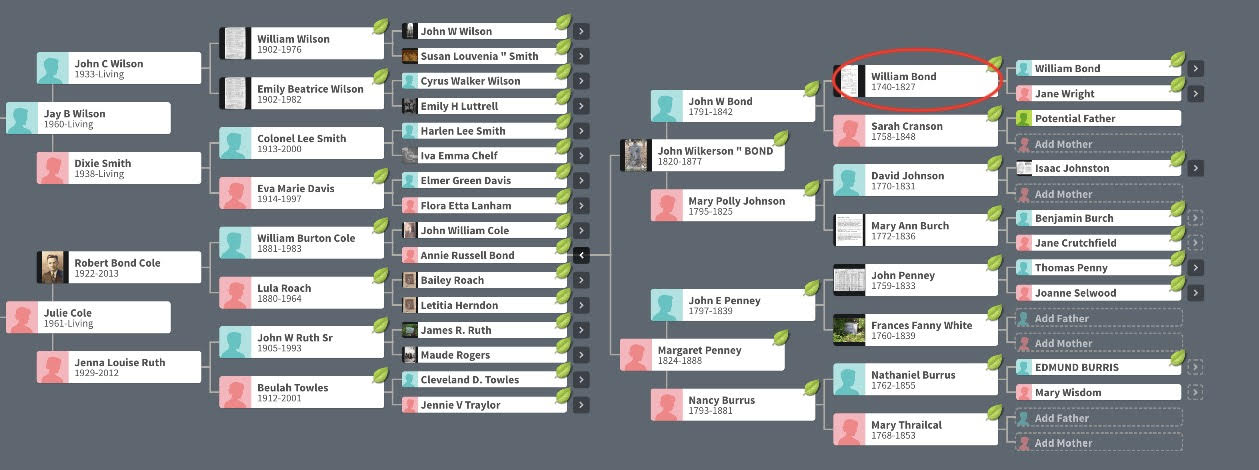
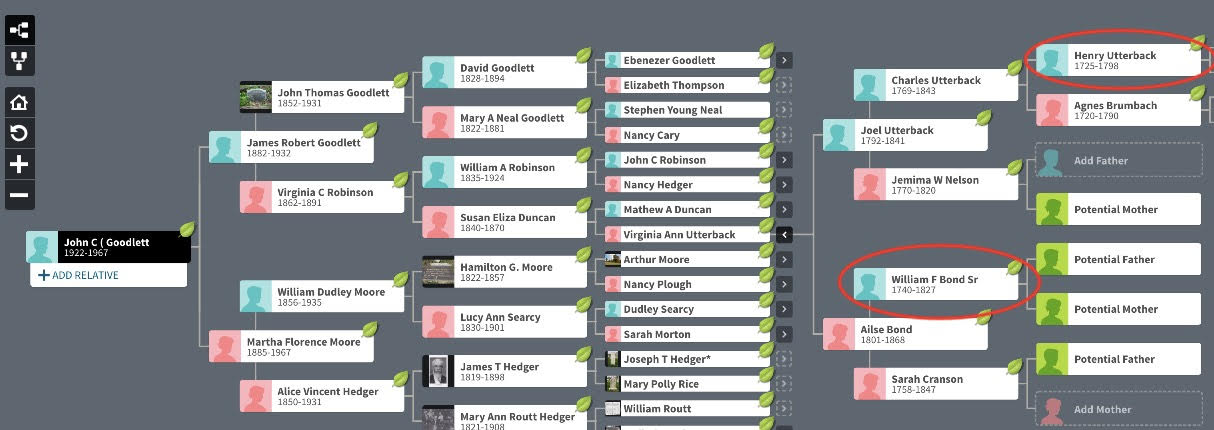
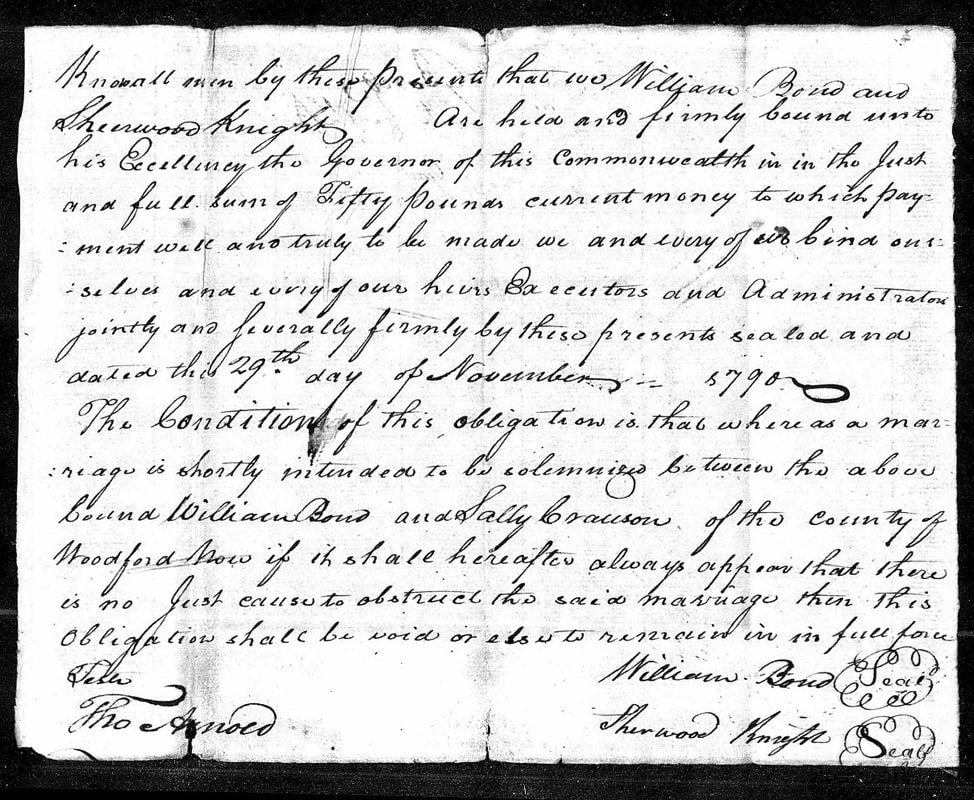
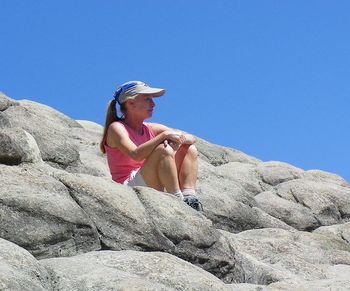
 RSS Feed
RSS Feed